The Ultimate Guide to Rebranding Your Business

Maybe the time has come for you to rebrand your business. But how do you get started? Do you change your logo and then worry about the rest?
Rebranding can turn a brand into a magnet for new audiences, revitalize it, and give it a fresh and exciting new identity. But there is a catch. Rebranding is one of the most challenging marketing strategies to pull off.
When you rebrand, you need a plan of action. And you need to know your audience. Without a fresh, consistent, and inspired approach, rebranding can backfire against you.
This guide to rebranding a business will help you navigate the challenges and pitfalls of creating a new brand strategy. In addition, this guide will help you define your brand’s mission and position in the market. You will intimately know what makes your brand strong.
What Does Rebranding Mean?
Rebranding is the process of creating a new company identity. It’s more complex than a simple logo refresh. A complete rebranding strategy can cover all aspects of your company’s personality, from your logo, slogan, and website to your packaging and marketing materials.
On the web, rebranding is often used as a synonym to changing your logo and updating your website. But at its core, rebranding means much more than this. A company can refresh its logo or website without rebranding itself. When it rebrands, however, it changes its identity, and with it, it may also alter its mission statement and objectives.
For many companies, rebranding is a natural phase of their growth – a process through which they may have to go through more than once. It arises naturally as a need to align its objectives with market trends and customer expectations. On average, organizations change their visual identity once every decade. Rebranding is also common after mergers and acquisitions.


Brandsonify offers high performance
Coaching, Branding, Marketing,
Advertising, Technology, and
AI & Big Data solutions for
challenger brands.
Rebranding is usually done with customers in mind. No company wants to alienate customers with its rebranding. On the contrary, companies may rebrand to engage customers more and reach a wider audience. But rebranding can help a brand create a different identity in the minds of investors and competitors as well. It can help the company’s management and employees rethink their work and strengthen their commitment to it.
Your corporate identity and branding are closely connected. The first influences the latter. But your branding is driven by your company identity as well. The logo you choose, your slogan, your website, and your marketing – your corporate identity influences all of these. At the same time, a successful rebrand can make you feel proud about being who you are and doing what you do.
Developing a brand identity is a process that relies on internal as well as external factors. As the owner or manager of a company, you can control some of these factors. You can change the look and feel of your website, create a new logo, or opt for a different branding strategy that is more empathetic.
However, whether your rebrand succeeds or not depends on how your audience perceives these changes. Audience perception, in turn, is shaped by their interaction with other brands, market trends, and expectations.
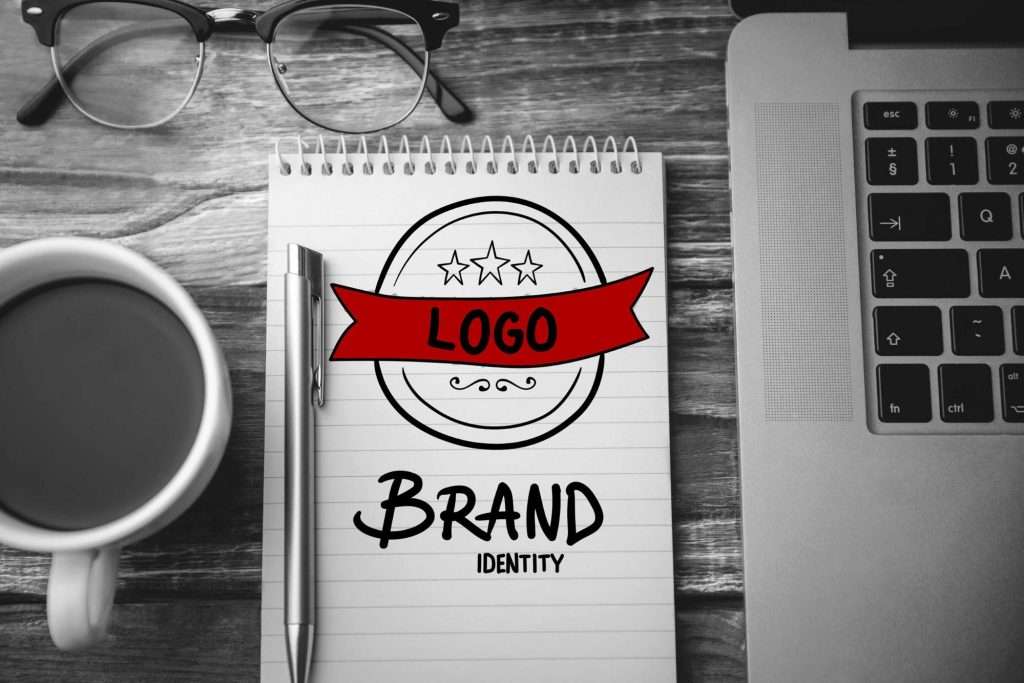
Key Reasons for Rebranding Your Business
Companies that need rebranding experience many tell-tale signs that the time has come for change. Some of these signs are obvious. If you too are considering a rebrand, it’s important to pay attention to both the positive and the negative signs.
Negative Signs
- Lack of Engagement
People engage more with the brands they like and buy more from the brands they engage with. Engagement between consumers and brands takes many forms, from the actual time visitors spend on your website to likes, shares, and follows on social media.
Today, when they are swamped with choices, consumers have only a limited time every day to engage with brands.
Every day consumers face up to 5,000 ads. Add to that the fact that the average person makes around 35,000 choices daily, and now you have to give your audience a very good reason to engage with your brand. Otherwise, it will be easier for them to choose not to, especially since making too many choices tires the brain and reduces willpower.
Do consumers leave you positive reviews? Do they comment on your blog posts and do fans and followers interact with your social media pages? Engagement is crucial for surviving online today, and rebranding helps with that.
94% of participants in a Gensler Brand study said they would recommend a brand they were emotionally engaged with.
- Outdated Look
How would Microsoft look today if it still used its 1992 logo? Or what would Amazon be if the website looked and felt like it did ten years ago?
Not half as colorful. Color increases brand recognition by up to 80%, according to a University of Loyola study. What’s more, a signature color can further increase brand recognition by 80%. Just think of the green in the Starbucks logo.
Trends, technological developments, and customer expectations all shape brand perception. With so many brands today committed to relentless innovation, the pace at which websites, logos, apps, or products become outdated has increased exponentially.
Two years ago, your website may have been all the rage. But today, it may need rebranding. That’s how fast things move.
- Loss of Relevancy
Remember the old Apple rainbow logo? Back in 1998, Steve Jobs changed it to a monochrome logo that reflected Apple’s elegance, minimalism, and competitive edge. While not unappealing, Apple’s colorful logo lost touch with the trends at a time when computers were making a huge leap forward.
The rainbow logo may have been a nod to the Apple II, the world’s first computer with a colored display. But in 1998, when the first iMac came out, the rainbow logo would have looked childish on the sky-blue computer.
Apple turned to a monochrome logo briefly, before settling on a more elegant, metallic logo that went through a few transformations over the years.
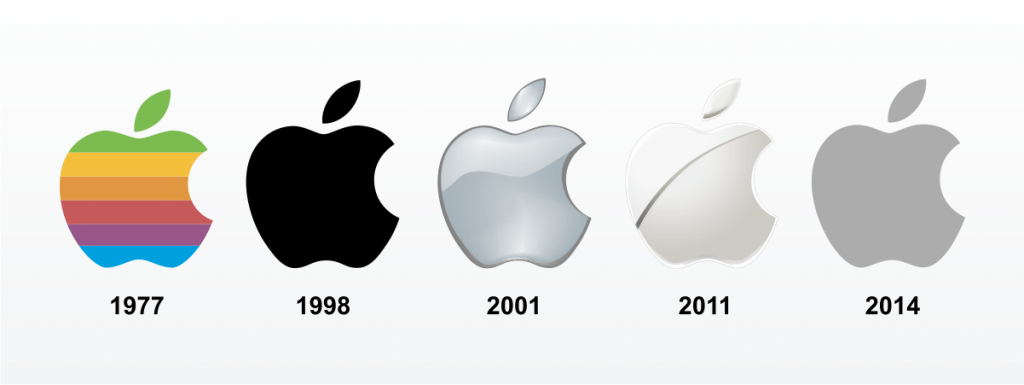
- Need for Differentiation
Customers constantly compare your brand to competitors. They do this every time they have to make a choice. Every time they shop for a product. Every time they look for a solution to a problem. When your brand identity is too similar to that of your competitors, customers are less likely to choose you.
Positive Signs
- Brand Growth
One of the best reasons to rebrand is to celebrate the growth of your company. As your brand grows, so do expectations. Confining a growing brand to its old startup identity is like dressing a young adult in adolescent clothes. It can be uncomfortable. Besides, it makes the wrong impression.
- New Vision
Many brands start small and need a few years to understand their position on the market and determine their unique selling point. Their vision changes during this process, often broadening and incorporating new elements. But a company may change its vision more suddenly as well. A string of bad financial reports coupled with customer dissatisfaction (or a period of roaring success, with high revenues), may also drive a company’s executive team to update their vision.
- Globalization
When your business goes global, your existing brand identity may get lost in translation. Brand names and slogans can mean unfortunate things in other languages, making them very difficult to market abroad.
One example is Pepsi’s infamous “Pepsi brings your ancestors back from the grave” tagline in China, a translation for its catchy Western slogan “Pepsi brings you back to life.” But things don’t have to be this dramatic. Twix was once named Raider before its global expansion called for a more descriptive name that captured the spirit of the twin biscuit sticks.
An even more inspired name change, and one that would have a lasting impact on the web as we know it, took place back in 1995 when Jerry and David’s Guide to the World Wide Web – ahem! – became Yahoo! Yahoo! was a simple word that almost anyone in any language could remember.
The same can be said about Nike. The sportswear giant and lifestyle company was founded as Blue Ribbon Sports back in 1964 and initially only sold shoes for a Japanese brand. But seven years later, when it started selling its own products, it adopted a shorter and more appealing name. A name that many people today associate with the brand more than with the Greek goddess after which it was named.
Going global is great, but when it happens, you need to make sure that your new audience understands your brand name and marketing materials. For many brands today, creating a website has become the equivalent of going global and it often calls for rebranding.
If your website traffic includes visitors from different regions, you can use rebranding to provide a universal message and ensure nothing is lost in translation.
- Mergers or Acquisitions
Rebranding is not always a choice. When two or more companies merge or when one company acquires another, rebranding may become a necessity.
Whether it’s a case of refreshing a logo, blending two logos, or creating a new logo from scratch that reflects the identity of a new business entity, branding is often indispensable after mergers or acquisitions. It’s one of the best reasons for rebranding while incorporating a dual vision.
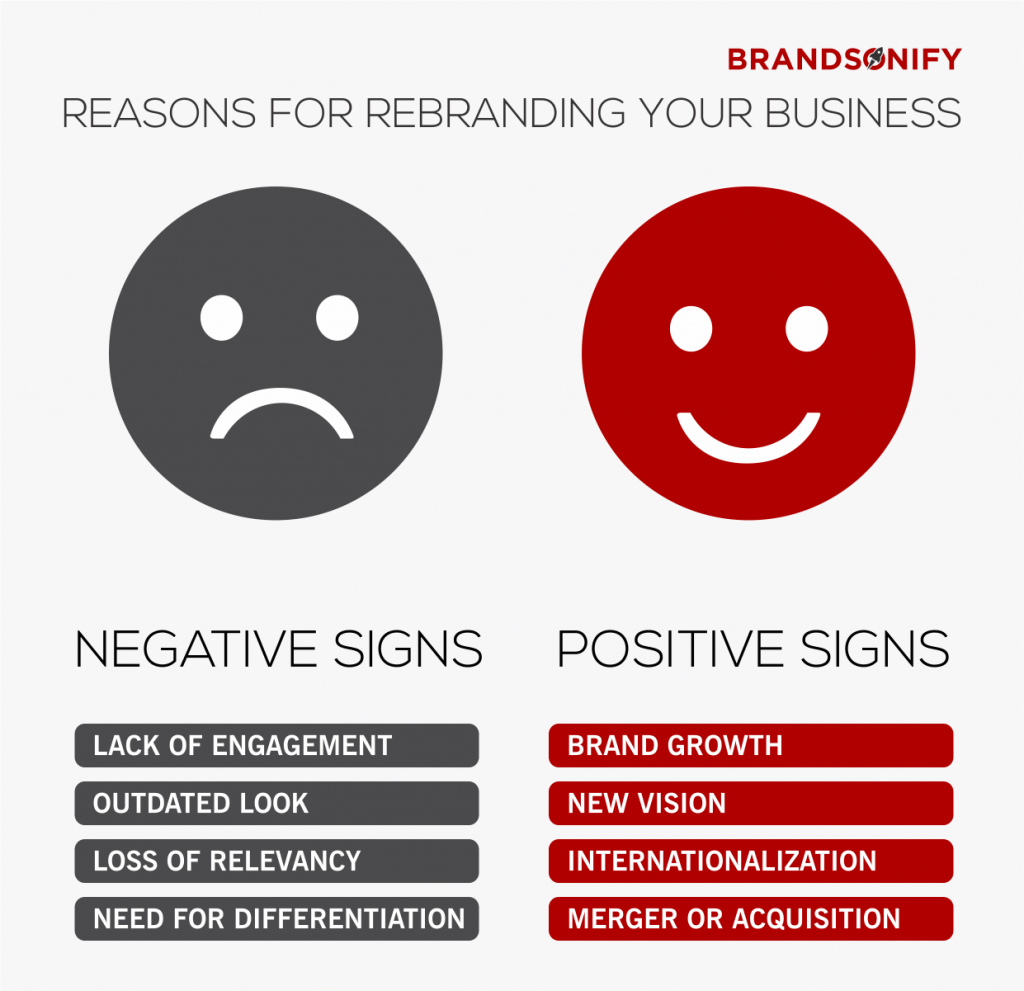
The Pillars of a Successful Rebranding Strategy
Rebranding a company step by step is the best way to ensure a positive, inspiring, and ultimately successful corporate identity change. In the first stage, you have to ensure that you are moving in the right direction. You need to make rebranding a unified goal for your whole team.
It all starts with the purpose of your rebrand and the other key pillars that support your campaign. These help to define your rebrand at the concept stage. All successful rebranding strategies rely on the following pillars.
- Purpose
Your rebranding campaign is purposeful when it is driven by clear objectives. Whether your brand is adopting a new vision, has been through a merger, or needs to increase engagement, the rebrand should be undertaken as a natural step in the life of your company. When rebranding arises only as a justification for the marketing department staying busy, the results can be disastrous.
- Consistency
A successful rebrand involves different online and offline channels, including social media, email, and local marketing. It may also require multiple teams in different locations working on the same campaign. For a rebranding campaign to bring the desired results, it has to be consistent from the start. Logo designs, visual guidelines, content marketing, and everything else – all need to convey the same message.
- Emotion
The most successful rebrands focus on the people who make them possible – the customers. They emphasize the human element and celebrate it – they arouse emotions. A logo can convey emotion, and so can a website. But much of the emotional appeal of a rebranding campaign depends on the tone and voice of the marketing materials and whether these connect with the target audience.
- Engagement
Brands that use emotional branding inspire and engage customers. They have the power to transform the identity of a company in a way that encourages people to interact with it more, online and offline. Engagement is not something you can plan, but you can create the right conditions for it to happen. When your rebrand addresses customer concerns and pain points, customers pay attention.
- Commitment
When a brand is committed to changing its identity, this shows in its entire approach to rebranding. It doesn’t look for quick solutions and easy fixes. Instead, it uses creativity and empathetic marketing to solve some of its key identity problems – its bland social media image or outdated website, for example. At the same time, it believes in the purpose and value of the new identity it forges and can defend it from critics.

Steps to Rebranding Your Company
Rebranding a company can be a valuable experience for the entire team. And, of course, it can pave the way for better things to come. But to prove effective, rebranding calls for a thoughtful and discerning approach. It requires a well laid out blueprint that can give structure and a clear direction to the entire process.
1. Create a Brand Identity Questionnaire
What is your brand identity? Is it rich and luxurious? Or is it simple, minimalistic, and down to earth? A brand identity questionnaire can help you determine your brand identity and set the stage for all your rebranding efforts.
When your brand identity is not clear to you, your rebrand may end up confusing everyone – including your team. That’s why you need to make sure these questions make it into your brand identity questionnaire.
- What does our company do?
- What problem do we solve?
- Who are our top three competitors?
- How are we different from our competitors?
- Why should prospects engage with our brand?
- Why should prospects buy from us?
- Who is our ideal customer?
- What is our primary message?
- What are our subsequent messages?
- What are the three adjectives that best describe our brand?
2. Understand Your Ideal Customer
The brand identity questionnaire focused on your brand – now it’s time to focus more on your customers. It’s time to understand them better.
Use social media, email, and any other tools to learn more about your customers – their expectations, pain points, and the solutions they require. Break this information down according to each stage in the buyer’s journey.
- Awareness Stage – What are the best channels to reach customers at this stage?
- Consideration Stage – What information does a prospect require at this stage?
- Decision Stage – What can make prospects choose your brand over competitors?
3. Analyze Competitors
Competitors have an indirect effect on how customers perceive your brand. They hold the key to your strategic positioning in the market. More importantly, they can help you understand what makes your brand special. Analyzing competitors is an essential step in your rebranding process and one you shouldn’t skip.
- Find your competitors using Google, Amazon, and other search tools.
- Categorize primary and secondary competitors. Primary competitors target the same audience as you. Secondary competitors offer higher or lower end variants of your products or cater to a related audience.
- Rate their website for appeal, user experience, and value.
- Compare their logo to your own, considering its ability to attract attention and memorability.
- Follow competitors as a prospect on their blog, on email, and on social media to better understand their message and determine how effective it is.
- Review their social media accounts.
- Check their customer reviews.
4. Define Your Brand’s Story and Voice
Does your brand tell a new story or does it tell an old story in a new voice? Going back to the origins of your company can ground your rebrand and place it in context. Perhaps your brand’s voice has changed with time.
Maybe it has become clearer and more confident, and now you need a rebrand to distill it. Finding your brand’s voice doesn’t have to be challenging.
- Describe your brand voice in three words
- Explain each of these words using adjectives
- Match your brand voice to these words to become more persuasive
Write a Rebranding Manifesto
A rebranding manifesto captures the spirit of your new brand identity. It’s something you can go back to at any time to help you maintain a clear direction during all stages of the rebrand.
It covers your mission, purpose, the extent of the rebranding, the strategies you will use, and the timeframe for the whole process. Your rebranding manifesto shouldn’t be longer than a few sentences.
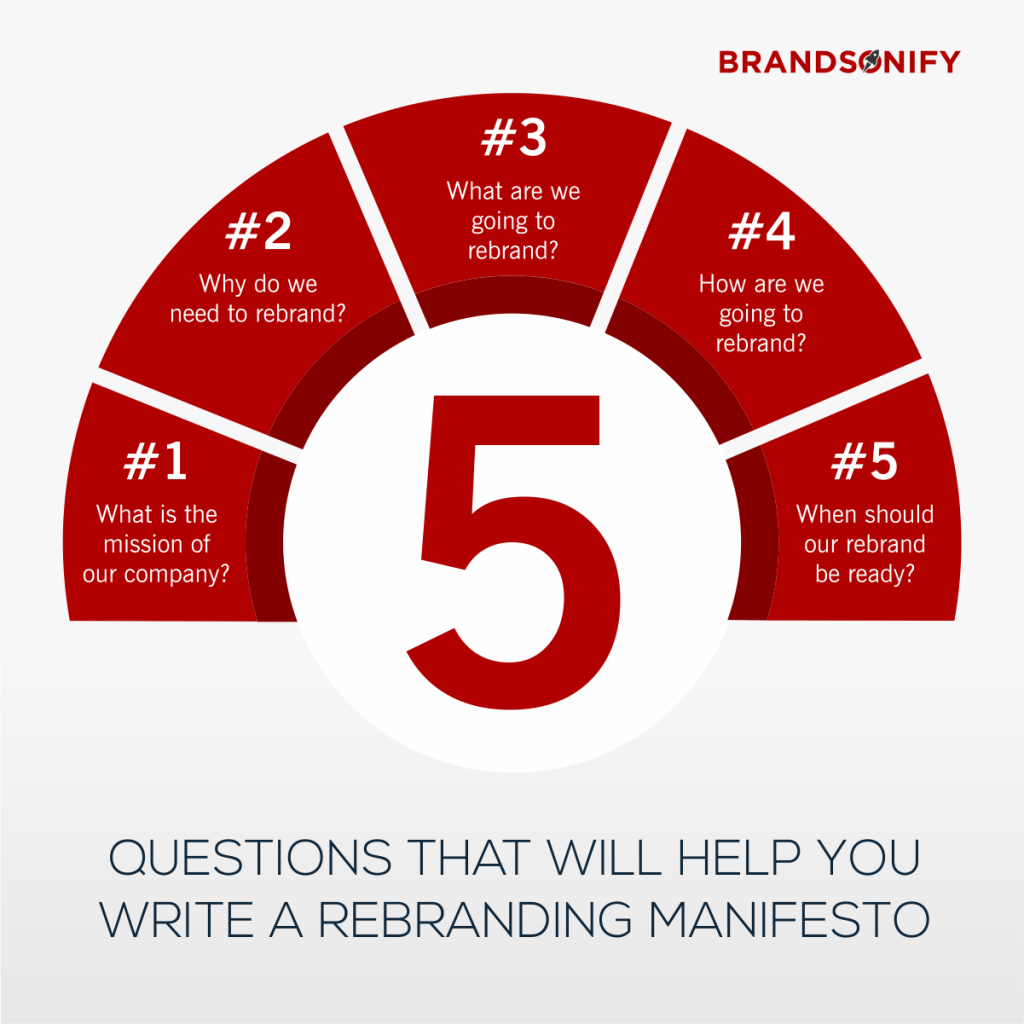
6. Create Rebranding Guidelines
Rebranding guidelines keep your new brand identity consistent across various channels. You want to create different types of guidelines that cover all aspects of the rebranding process. You can create as many guidelines as you think are necessary. What should your guidelines include?
- Logo size, placement, and variations
- Color palette
- Typography
- Iconography
- Imagery
- Stationery
- Social media assets
- Brand tone
7. Rebrand Across Channels
Rebranding a company step by step requires rebranding across channels. Online, it starts with your website and blog and moves to social media. Not all social channels are equally important for your brand, so focus on the ones that have the most substantial impact.
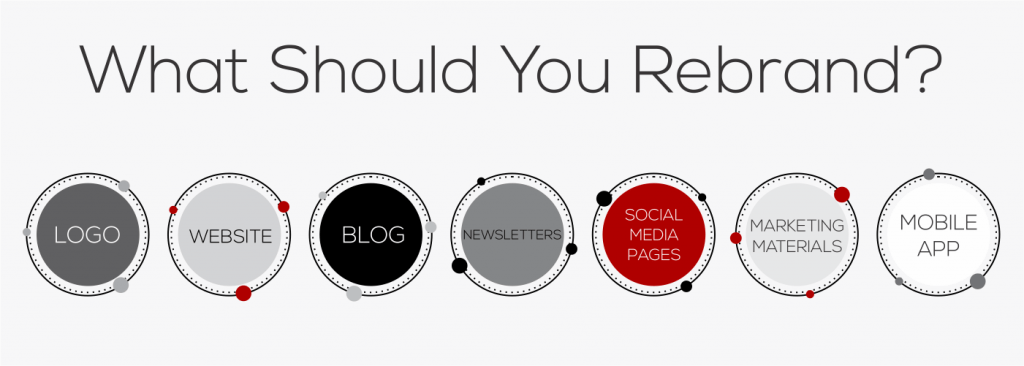
8. Focus on Emotional Branding
Brands that use emotional branding are more likely to inspire customers to act. Emotional branding attracts attention. It appeals to people’s hearts, not their pockets. It has power even over distracted, busy, inattentive customers.
When you listen to your audience and try to solve their problems, they pay attention to what you have to say. That’s why emotional branding is so powerful. It identifies the key emotions your brand can arouse in your audience and uses them to make your message stronger, clearer, and more memorable.
Emotional branding connects you to people like few other marketing strategies can.
Rebranding Checklist
So, what do you need to get started with your rebranding strategy? Make sure you don’t forget anything with this checklist.
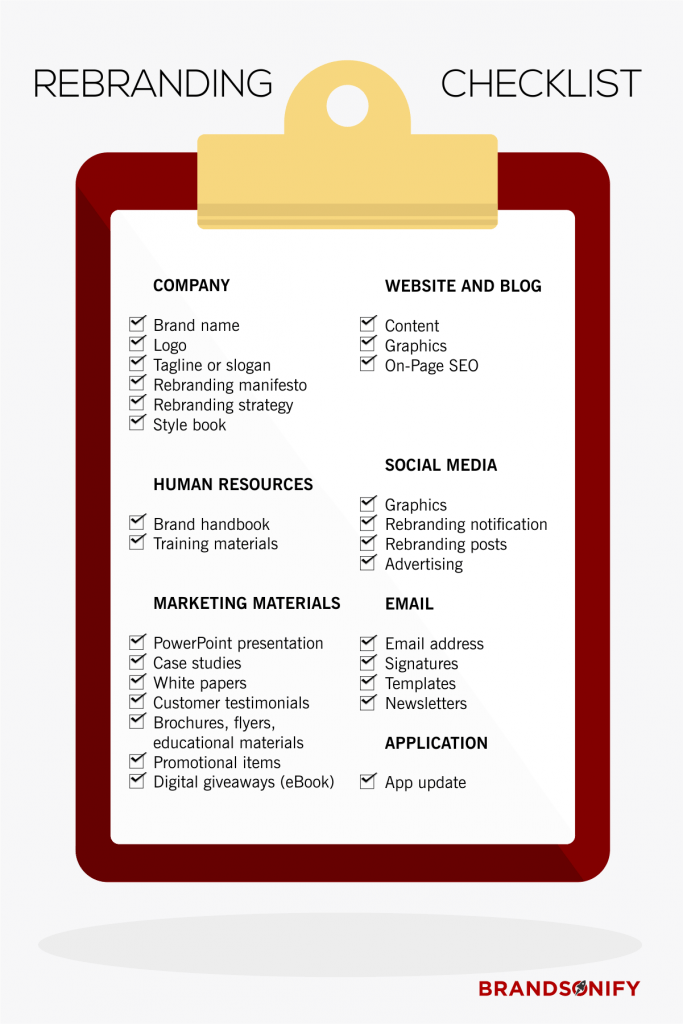
Successful Rebranding Examples to Inspire You
Before you embark on your rebranding campaign, discover some of the best rebranding campaigns in recent years and the reasons behind them.
REI (2017)
For many years, REI has been America’s largest consumer co-op, but until a few years ago, this was not apparent to new customers unless they checked the company’s About page. Back in 2015, REI updated its logo, adding “co-op” under its brand name to highlight that it’s a store for the people. The update was followed by improvements to the website that created a richer visual experience for visitors and simplified navigation.
REI’s rebranding campaign was quiet but effective. It’s a good example of why you don’t have to make a show out of rebranding. While some scoffed at the logo change, it helped REI strengthen its brand identity. Later that year, REI’s decision to close shops on Black Friday and give employees a day off further consolidated its identity as seller of outdoor gear and clothing for the people.
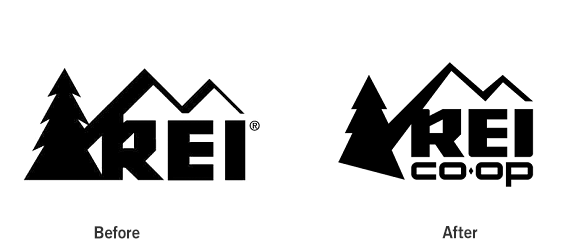
Airbnb (2015)
Back in 2014, Airbnb was growing fast, but its logo began to feel a bit outdated. The accommodation-sharing website decided to embark on an innovative rebranding strategy that tried to distill the spirit of the company into a new design.
As part of the process, four designers visited 13 cities on four continents and interviewed more than 120 Airbnb employees. This led to the “Belong Anywhere” tagline and the Bélo, a marque that captures the value of belonging and that anyone can draw.
Despite some criticism, the Bélo design went on to win a heap of awards and refreshed Airbnb’s future marketing campaigns. Today, the Bélo is so much more than a logo for a global community of hosts and travelers – it encompasses a way of life.
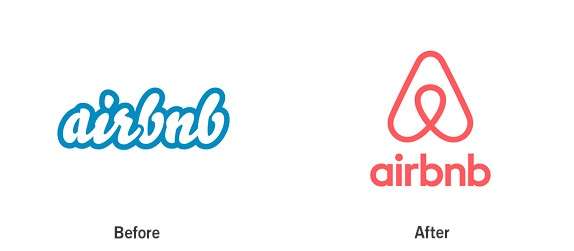
Mastercard (2019)
While the MasterCard logo has always been easy to recognize, this year the company has aspired to create an even simpler design that can be easily used across the web and beyond. In the age of mobile apps and online banking services, logos that are easy to scale while remaining recognizable have an advantage. Logo with text don’t always scale down perfectly – the text becomes hard to read. MasterCard recognized this and did away with the text to create an effortlessly simple logo.
Mastercard’s new brand identity emphasizes connectivity. According to the company’s CMO Raja Rajamannar, more than 80% of people recognize the Mastercard symbol without the company name. Mastercard’s wordless logo is an excellent example of globalization and digitization. It’s one logo that can be used universally across mediums and scaled as needed. It’s a perfect digital logo.
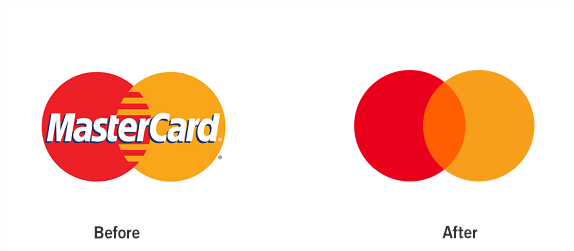
Ravensbourne University (2016)
Before its rebrand, Ravensbourne University was a well-liked university, but to many students it did not look all that exciting, at least not judging by its logo and website.
In one of the best rebranding campaigns in recent years, Ravensbourne University opted for a daringly creative rebrand. A winner at the 2016 Brand Impact Awards, the campaign raised this London-based university’s profile and turned it into a magnet for creative minds.
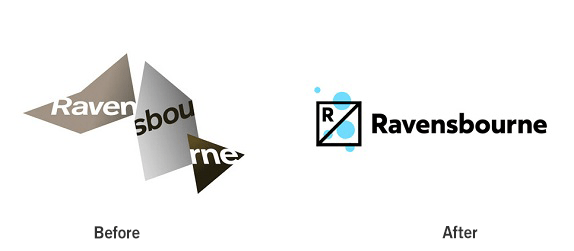
5 Mistakes to Avoid When Rebranding a Business
Rebranding doesn’t always work as smoothly as in the examples above. Sometimes things get messy, and brands find themselves on the verge of a fallout with their customers.
1. Changing Your Old Look for No Good Reason
In 2010, the iconic clothing brand Gap thought it could do with a logo refresh. Gap changed its logo without warning, causing a public outcry among customers. Angry fans on social media threatened never to buy a Gap product again – that was how much they loved the brand’s identity.
In less than one week, Gap went back to its classic logo. Gap made one of the biggest rebranding blunders possible – rebranding without considering its customers and their taste and disregarding the emotional appeal of the brand. New isn’t always better.
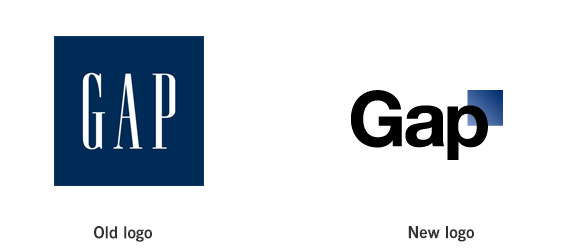
2. Thinking a Fresh Look Will Improve Your Reputation
Comcast is one of the largest cable and internet providers in the US, but it has a far from stellar reputation. In 2010, the company rebranded its consumer services under the name of Xfinity, promising a new era of entertainment, and better services.
The company did not explain the rebranding nor the name, and customers themselves were mostly clueless. The name stuck, but the rebrand didn’t help Comcast improve its reputation. It was a simple logo change and image refresh – nothing more. Comcast is still being dubbed “America’s most hated company.”
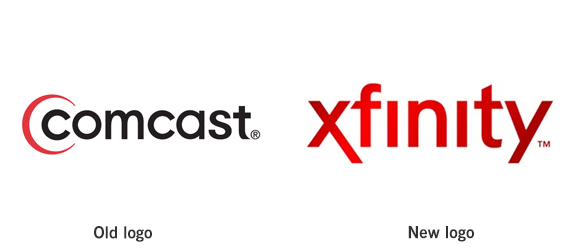
3. Giving Up on a Classic Look
Back in 2010, Seattle’s Best Coffee thought a new logo would connect with modern customers better. But its rebrand has gone down as one of the most insipid rebrands of the decade.
The new logo had nothing premium about it, and the branding message didn’t help either. The company used “premium” and “simple” in the same statements, with confusing results.
The old logo captured the brand’s identity better and gave it an authentic feel which the shallow new design could not.
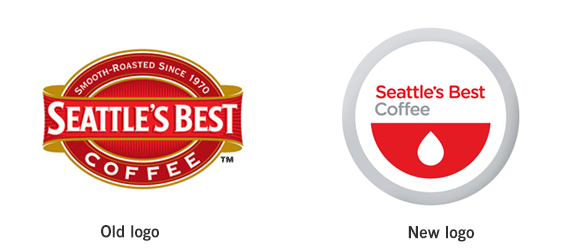
4. Rebranding Too Much Too Often
Pepsi went through many rebrands since its founding in the 19th century, but the 2000s rebrands, which cost Pepsi millions, have been perhaps the most uninspired.
Pepsi reportedly paid $1 million for its 2008 logo redesign, in an effort to add a new twist to its classic image, and look cooler as a result. But the company still went on losing market share, and many fans of the classic logo were not pleased.
Like other marketing strategies, rebranding can be done for all the wrong reasons. Sometimes it’s really quite unnecessary – people love a brand with a classic image as it is, even if they may not buy it as much as in the past.
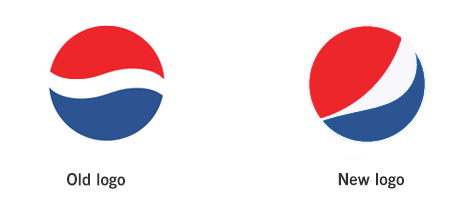
5. Complicating Your Logo Unnecessarily
In 2010, Kraft wanted to make its logo more interesting, so it replaced its simple logo with a starburst. The new logo was immediately hailed as one of the worst logos in recent history.
Fortunately for its image, Kraft kept the old logo too. Two years later, it adjusted it slightly and endowed it to its foods group division. You will still find it in stores today.
The moral: it’s okay to be partly wrong about rebranding, as long as you don’t ditch the old look entirely. Reverting back to it should be an option if things go wrong.
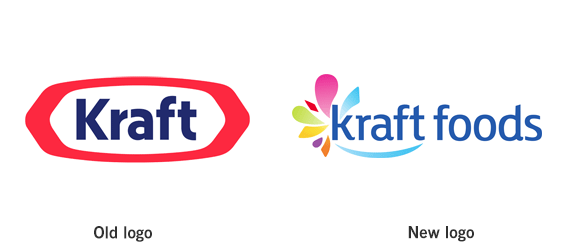
Rebranding a Business Best Practices
Add these best practices to your rebranding strategy to ensure customer satisfaction.
1. Validate the reason behind the rebrand
As the company rebranding flops from the section above prove, changing your company identity without having a clear understanding of the reasons behind the rebrand can end in failure. That’s why it’s crucial to validate your rebranding strategy before you rebrand.
The validation process should include not only the team in charge of the rebrand, but your whole team. At the same time, it must involve your target audience. Ask your team as well as your customers what they think of the rebrand.
Use surveys, questionnaires, and any other tools you find helpful. Ideally, you should offer a sample audience a few different versions of your new logo or tagline and measure their response to it.
2. Determine how much rebranding you need
A complete rebrand can transform the face of your company. But it’s often not necessary. Going over the top with your rebrand costs time and money and, in the absence of a strong reason to validate it, can work against you. Refreshing your brand with a new logo and a better website can bring the needed change without the uncertainties of a complete makeover.
Take one thing at a time. If your website needs rebranding, that doesn’t have to mean you need to redesign your mobile app or create a company-wide brand training program for your workforce.

3. Calculate costs and duration
Projecting costs and keeping track of expenses gives you a better overview of your rebranding campaign. More than helping you stay within your budget, it can help you reduce costs.
There’s another advantage to being conscientious about your rebranding expenses. It makes it easier for you to identify tasks that burn too much money and look for more affordable solutions. For example, if you cannot create all the marketing materials yourself, you can outsource them. In many cases, this proves cheaper than having the wrong people work on tasks for which they don’t have the time nor the qualifications.
Note everything down, from the cost of graphic design and website optimization to that of printed promotional materials. To keep track of rebranding costs more efficiently, devote a section to this in your rebranding strategy. Update costs as you go. The costs of your rebranding campaign are closely related to the duration of the campaign.
How long does it take to rebrand a company? Rebranding doesn’t have to take more than a few weeks. But if you factor in marketing materials, online promotions, and customer satisfaction assessments, the process can take months.
4. Adjust your mission statement
Visual rebranding campaigns are the easiest to pull off. These don’t alter your mission statement. But when you’re rebranding more than your website and Facebook page – when you’re changing your company identity – you need to update your mission statement as well.
When your company identity and your mission statement are out of sync, your audience may become confused. It’s important to adjust your mission statement in the early phases of your rebrand. It goes without saying that your mission statement should reinforce your corporate branding guidelines.
5. Test your rebrand
Start with a small sample. Gauge user reaction on social media. Check out what people are saying about your brand identity change online. Go a step further and order a survey that focuses on a representative sample of your audience. Keep a close eye on key engagement metrics like comments, shares, and likes, and monitor the conversion rates across channels.
After the excitement of the initial rebrand, this testing phase may seem tedious. But it’s crucial to achieving a successful rebrand. It gives you the opportunity to adjust and change things before any serious customer dissatisfaction has time to settle.
6. Market and launch your rebrand
There are no hard and fast rules on how to launch a rebrand. It usually starts with your logo and website, and a statement that explains the reason behind the rebrand. But beyond that, you have to choose what you think would work best for your audience. You need marketing content across channels.
You can also create ads, pay for sponsored posts, or create a big event with champagne and fireworks and stream it on Facebook Live. It all depends on your audience and the objectives behind your rebrand. But one thing’s clear – your rebrand announcement is just as important as the website or logo redesign.
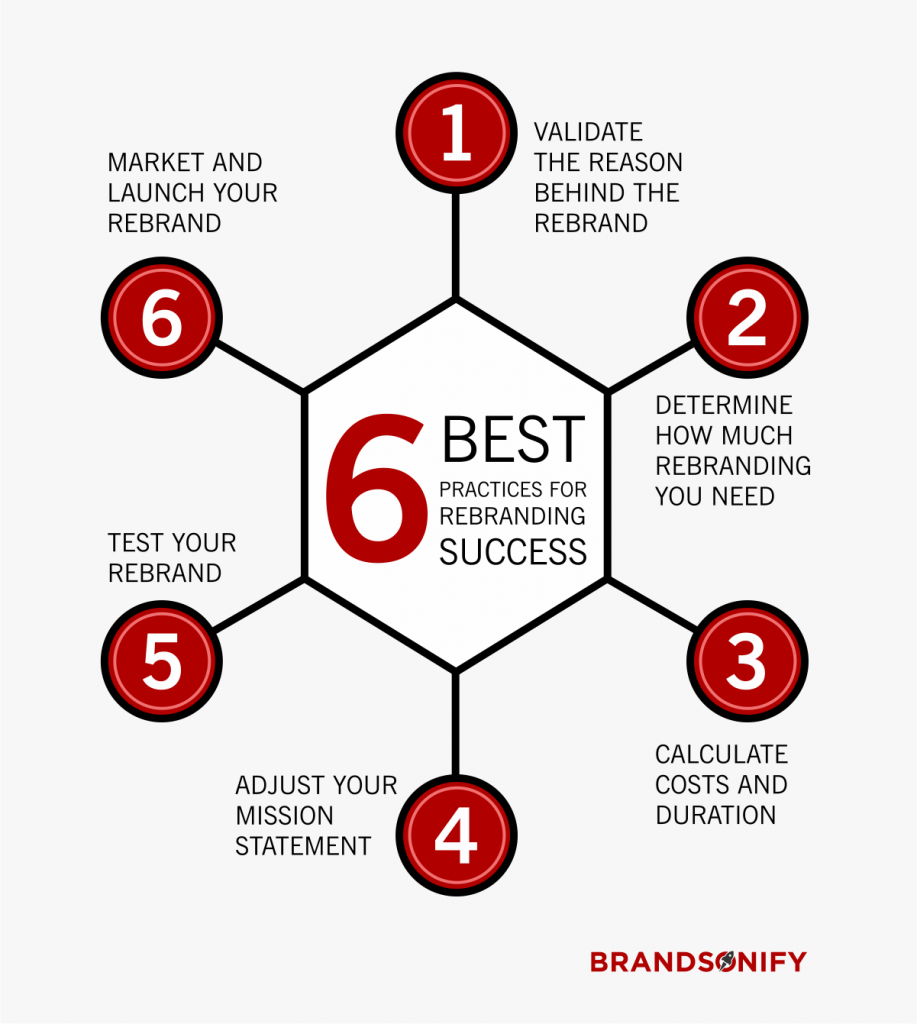
Working With a Company That Does Rebranding
Should you work with a rebranding agency or not? This is one of the key rebranding questions and one you should ask yourself before starting a rebrand even if you believe your team can do all the work.
That’s because teaming up with a rebranding agency can streamline the entire process. It can help you overcome obstacles and, in some instances, may even reduce your costs.
Explore now the key benefits of working with a rebranding agency.
Benefits
1. Get expert advice
Companies who rebrand for the first time have the most to gain from working with a brand management consulting firm. This partnership brings them a deeper understanding of all aspects of the rebranding process, from the choice of a new logo to planning an empathetic marketing campaign that consolidates their brand message.
Rebranding is fraught with subtleties, and even a slight variation in the shade of a color or the typography of a logo can make a big difference.
2. Make your branding more emphatic
For many companies, the big challenge they face with branding is not so much creating a new logo or updating their website experience, but creating the marketing materials they need to support their rebranding efforts. You may be in a similar position.
Communicating the right message is crucial here to make people pause and pay attention to what you are saying. Conveying your message clearly and emphatically requires talent, skill, and time.
A rebranding agency fueled by a creative team can move people better than the average marketing department.
3. Finish the rebranding faster
Finding graphic designers, content writers, or web developers takes time. Also, coordinating all the different resources and elements you need to complete your rebranding campaign is in itself a challenge.
That’s why many small and medium-sized businesses turn to rebranding agencies. By providing a solution in one package, a rebranding agency takes the hassle out of planning, managing, and adjusting your brand identity on the go.
Working with an agency speeds up everything, from logo creation to marketing materials. It concentrates resources and allows you to use them more effectively where they are needed.
4. Crunch the numbers
Tracking the right metrics and analyzing data makes rebranding easier. It’s the only way to optimize costs and fine-tune your marketing. However, many small and medium-sized businesses don’t have a team of analysts for this task. So they monitor only views, conversions, or email open rates.
Rebranding agencies often provide data tracking and analysis which enable you to make better decisions at key stages during your rebranding.
5. Fill the gaps
Maybe you have a great design team but no content writers. Or perhaps you want to add video marketing to your rebranding campaign but don’t have a video team on board. Teaming up with a rebranding agency is a good solution to filling gaps in your team. Choosing the right agency means you don’t have to commit to full service. You can customize your service according to your needs.

What to Pay Attention to
It’s important to make the difference between brand management consulting providers and a rebranding agency. While a branding consultant may provide only guidance, a rebranding agency can offer a complete solution to your rebranding needs in one package. This includes consulting as well as logo design, content marketing, managed ad campaigns, and more.
Within rebranding agencies, there are notable differences as well. Some agencies provide only a few rebranding services, while they may outsource the rest. Others offer the whole package. Another important distinction is between rebranding agencies that specialize within a certain niche, or that work only with small or medium-sized businesses, and those that have a more varied portfolio of clients.
And remember that bigger is not always better. When you rebrand in a very competitive niche, it’s often best to choose a specialized agency that is up to date with the latest developments and trends in the industry. You may have to pay more, but you can balance the cost against the long-term benefits of working with an experienced team whose methods are more closely aligned with customer expectations.
Regardless of the rebranding services you choose, you should sign a Non-Disclosure Agreement. This is important because you may have to share sensitive data with the agency you work with. An NDA will safeguard your data.
Questions You Should Ask
1. Can you help me define my branding and audience?
It’s good to get brand management consulting as part of the package. Clarifying your objectives and knowing your audience’s pain points gives you an insight which you can turn into a more accurate marketing strategy.
2. What marketing services do you offer?
Empathetic content marketing means more than blog posts and website articles. It means videos, infographics, and social media marketing. A creative touch makes branding easier.
3. Have you worked with clients in my industry before?
Yes is usually better. When the agency you work with knows your industry, they have more insights for you. Also, you save time explaining to them what you do and how you do it.
4. Do you offer custom-fit services?
The ability to choose the rebranding services you need and scale them is important. Being stuck with a standard package for small business branding services limits your options.
5. How are you going to track performance?
A metric-driven approach works best, but you want to know a bit more than that. How often will you get reports? What channels will these include? Is it possible to set up automated responses based on those reports?
Get Started Now
Successful rebranding starts with a real need for change. It’s not so much a marketing ploy as a natural event in the life of a brand, a metamorphosis from one developmental stage to another.
Rebranding a company step by step takes time and gives rise to many challenges. But it can have a transformative effect on your company. In the long run, not rebranding can cost you more than going for it.
Should you rebrand or should you wait a little longer? Look for clues in your own audience’s responses to your brand. Ask your team about it too.
If your brand has outgrown its identity, or needs a fresh one, chances are you need a rebrand. And fast.
Brandsonify offers high performance Coaching, Branding,
Marketing, Advertising, Technology, and AI & Big Data
solutions for challenger brands.
Recent Case Studies
Airbnb’s 2014 Rebrand
Founded in 2008, Airbnb is a company which has revolutionized the lodging industry and created a global phenomenon. It is also a majorly disruptive force…
CONTINUE READING
Dunkin’s 2018/19 Rebrand
The first time the world saw the name Dunkin’ Donuts was in 1950. The original shop opened in Quincy, Massachusetts and it did not take long for the public to fall in love…
CONTINUE READING
Uber’s 2018 Rebrand
Uber has made such a massive cultural impact in a relatively short period of time, that it doesn’t need much of an introduction Founded in 2009, it is the default ride-hailing…
CONTINUE READING



